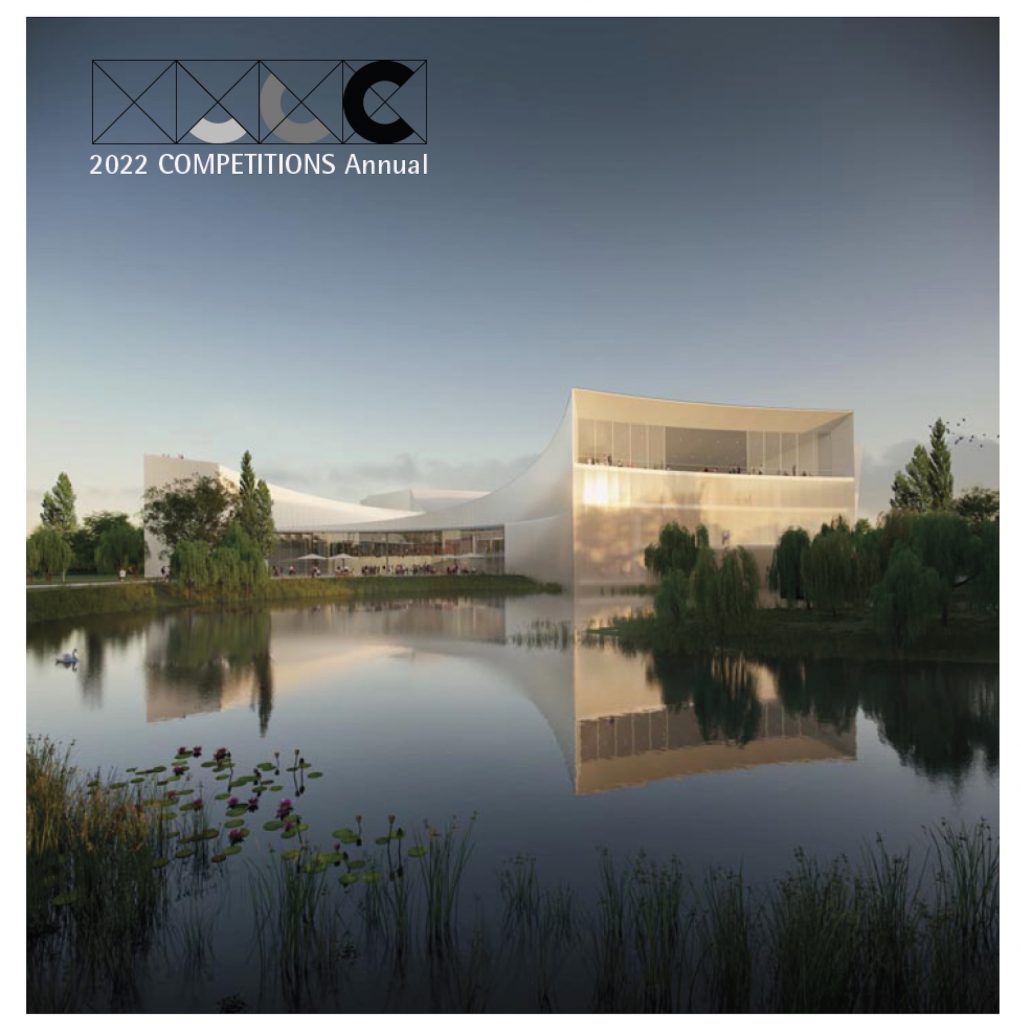Center for Physical and Mathematical Sciences, University of Geneva 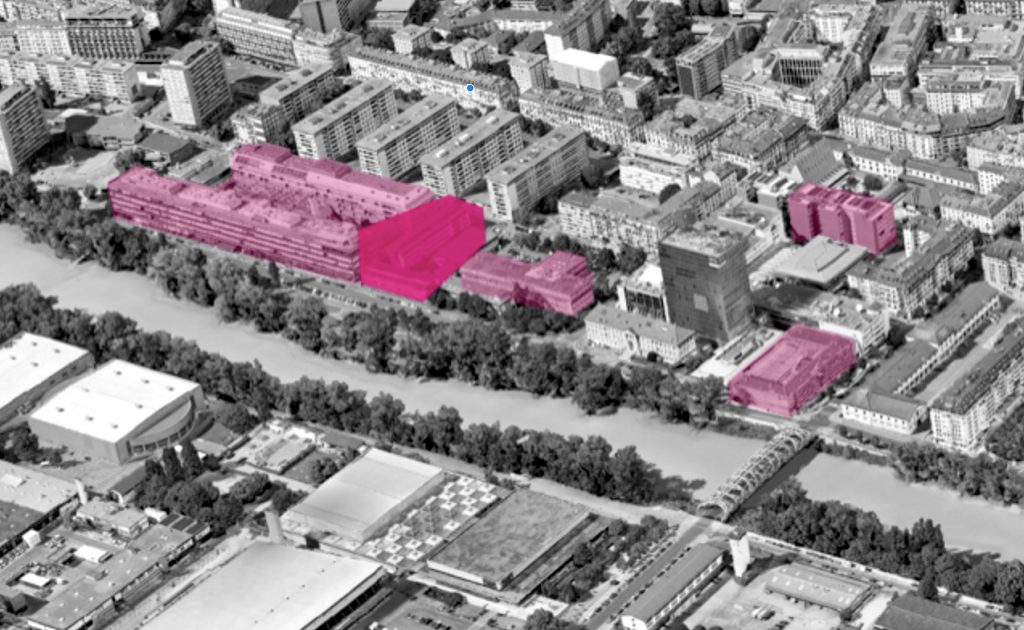
Sponsors: OCBA in collaboration with University of Geneva
Competition management: FISCHER MONTAVON + ASSOCIES Architectes-Urbanistes SA
Type: open, international, two-stage
Fee: none
Language: French
Eligibility: WTO, Switzerland
Timetable:
12. September 2024 – Stage 1 entry submission
27. September 2024 – Model submission
10. March 2025 – Stage 2 entry submission
04. April 2025 – Stage 2 model submission
Process:
Two-stage architectural design competition, with optional degree of refinement, open procedure, for multidisciplinary team, according to SIA 142. The objective for the client and the University is to build a future Center for Physical and Mathematical Sciences (CSPM) with a total floor area of around 20,000 m2.
Group leader: architect
Additional collaborators:
Civil engineering, building physics, building services, landscape architecture
Jury:
• Marc Collomb, Architecte FAS EPFL SIA, Atelier Cube, Lausanne (président)
• Francesco Della Casa, Architecte cantonal, arch. EPFL, Etat de Genève (Vice-président)
• Laure Baretaud, Architecte paysagiste, Paris
• Malena Bastien Masse, Ingénieure civile, Dr ès Sc. EPFL
• Alia Bengana, Architecte DPLG, Paris
• Reto Camponovo, Ingénieur en physique du bâtiment HES, HEPIA
• Luc Courtieu, Ingénieur CVSE, Etat de Genève, OCBA
• Xavier De Rivaz, Architecte, adjoint de direction service d’urbanisme, Ville de Genève
• Marco Girani, Architecte EAUG, UNIGE
• Shelley McNamara, Architecte UCD, Grafton Architects, Dublin
• Colette Ruffieux-Chehab, Architecte FAS EPFL SIA, Ruffieux-Chehab Architectes, Fribourg
• Pierre Robyr, Architecte EIG/EPFL, chef de projet, Etat de Genève, OU
• Martalicia Schnell, Architecte EAUG, cheffe de projet, Etat de Genève, OCBA
• Andrew Todd, Architecte OA, Studio Andrew Todd, Paris
Design Challenge
The Center for Physical and Mathematical Sciences (CSPM) will come to life by 2031 at Quai Ernest-Ansermet, on land owned by the State and already occupied by temporary buildings of the University. The realisation of this centre is essential to strengthen scientific excellence in Geneva and address the critical issues of the degradation of existing premises and their inadequacy for the needs of current and future research and teaching. This ambitious project will ensure the maintenance of UNIGE at the highest global level and will also provide residents of the neighborhood with direct access to the Arve River and the future park. Its scientific, economic, and social impact will extend beyond the framework of the University of Geneva and benefit the entire canton and its population. Following a consultation phase, an architecture competition will be launched, and the results will be known in April 2025. A study credit of 17.6 million was approved on March 2, 2023, by the Grand Council of the Republic and Canton of Geneva. It follows a preliminary study initiated in 2014 and involves the demolition of buildings constructed temporarily in the 1960s or those that are now obsolete. Research and teaching activities in physics and mathematics are currently scattered across several sometimes outdated sites, unsuitable for the technical requirements of advanced research and teaching, as well as safety and environmental standards. The implementation of this project is expected to take place from 2027 to 2031. For more information about the requirements (French):
https://ge.ch/grandconseil/data/texte/PL13190.pdf For questions: cspm@unige.ch |
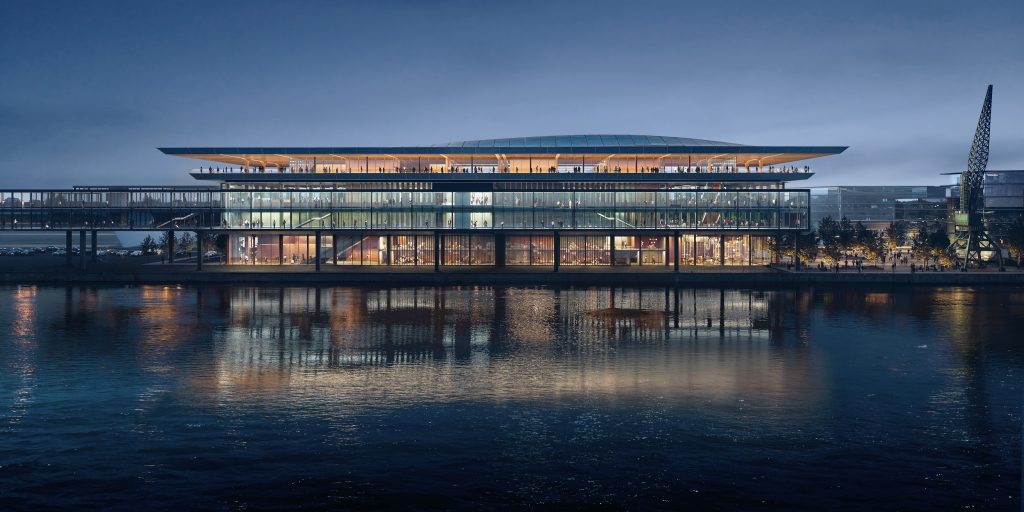
1st Place: Zaha Hadid Architects – night view from river – Render by Negativ
Arriving to board a ferry boat or cruise ship used to be a rather mundane experience. If you had luggage, you might be able to drop it off upon boarding, assuming that the boarding operation was sophisticated enough. In any case, the arrival experience was nothing to look forward to. I recall boarding the SS United States for a trip to Europe in the late 1950s. Arriving at the pier in New York, the only thought any traveler had was to board that ocean liner as soon as possible, find one’s cabin, and start exploring. If you were in New York City and arriving early, a nearby restaurant or cafe would be your best bet while passing time before boarding. Read more… Young Architects in Competitions When Competitions and a New Generation of Ideas Elevate Architectural Quality 
by Jean-Pierre Chupin and G. Stanley Collyer
published by Potential Architecture Books, Montreal, Canada 2020
271 illustrations in color and black & white
Available in PDF and eBook formats
ISBN 9781988962047
Wwhat do the Vietnam Memorial, the St. Louis Arch, and the Sydney Opera House have in common? These world renowned landmarks were all designed by architects under the age of 40, and in each case they were selected through open competitions. At their best, design competitions can provide a singular opportunity for young and unknown architects to make their mark on the built environment and launch productive, fruitful careers. But what happens when design competitions are engineered to favor the established and experienced practitioners from the very outset? This comprehensive new book written by Jean-Pierre Chupin (Canadian Competitions Catalogue) and Stanley Collyer (COMPETITIONS) highlights for the crucial role competitions have played in fostering the careers of young architects, and makes an argument against the trend of invited competitions and RFQs. The authors take an in-depth look at past competitions won by young architects and planners, and survey the state of competitions through the world on a region by region basis. The end result is a compelling argument for an inclusive approach to conducting international design competitions. Download Young Architects in Competitions for free at the following link: https://crc.umontreal.ca/en/publications-libre-acces/ 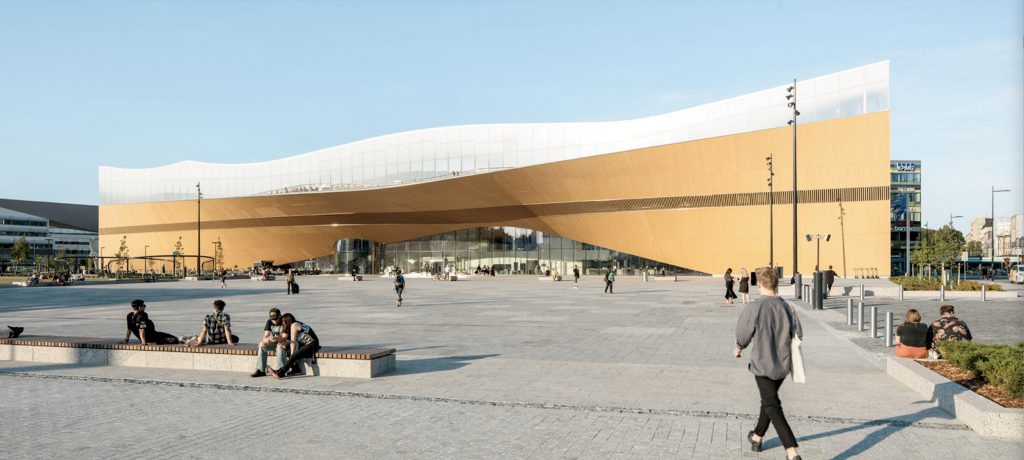
Helsinki Central Library, by ALA Architects (2012-2018)
The world has experienced a limited number of open competitions over the past three decades, but even with diminishing numbers, some stand out among projects in their categories that can’t be ignored for the high quality and degree of creativity they revealed. Included among those are several invited competitions that were extraordinary in their efforts to explore new avenues of institutional and museum design. Some might ask why the Vietnam Memorial is not mentioned here. Only included in our list are competitions that were covered by us, beginning in 1990 with COMPETITIONS magazine to the present day. As for what category a project under construction (Science Island), might belong to or fundraising still in progress (San Jose’s Urban Confluence or the Cold War Memorial competition, Wisconsin), we would classify the former as “built” and wait and see what happens with the latter—keeping our fingers crossed for a positive outcome. Read More… 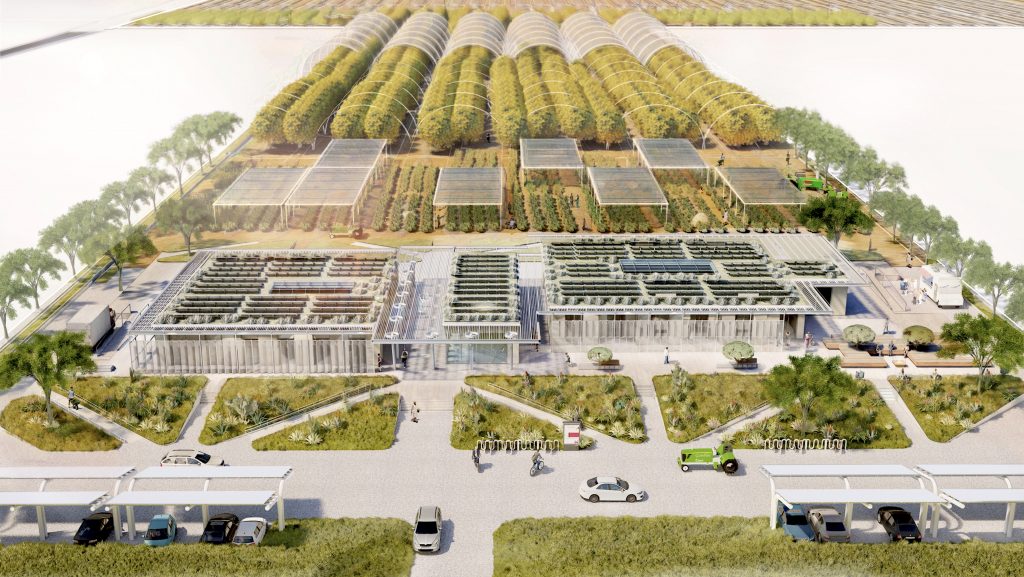
2023 Teaching and Innovation Farm Lab Graduate Student Honor Award by USC (aerial view)
Architecture at Zero competitions, which focus on the theme, Design Competition for Decarbonization, Equity and Resilience in California, have been supported by numerous California utilities such as Southern California Edison, PG&E, SoCAl Gas, etc., who have recognized the need for better climate solutions in that state as well as globally. Until recently, most of these competitions were based on an ideas only format, with few expectations that any of the winning designs would actually be realized. The anticipated realization of the 2022 and 2023 competitions suggests that some clients are taking these ideas seriously enough to go ahead with realization. Read more… 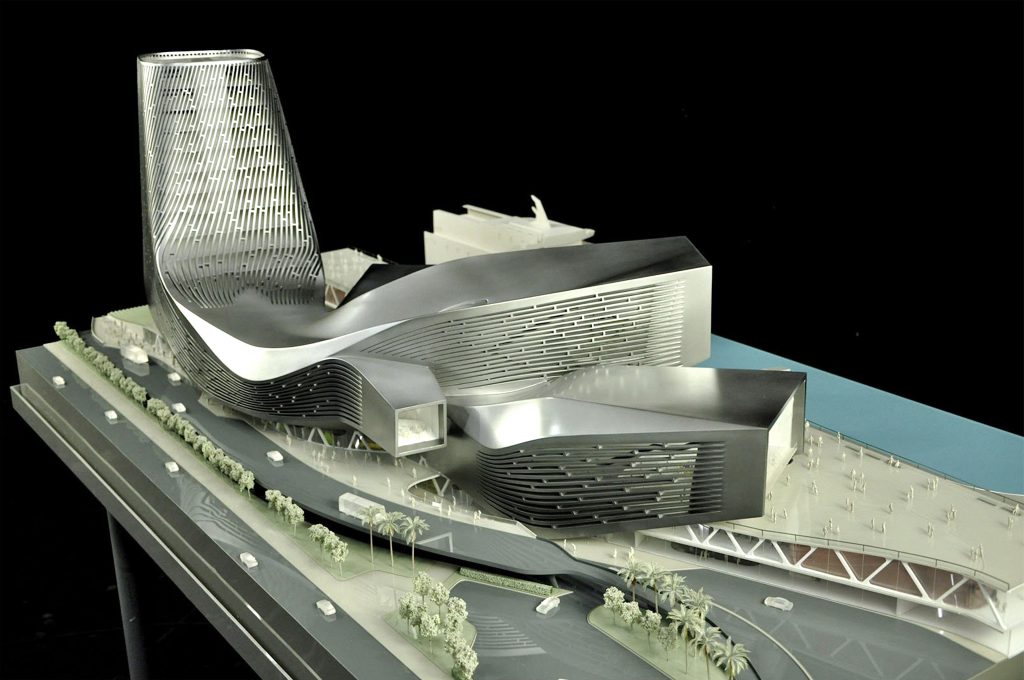
RUR model perspective – ©RUR
New Kaohsiung Port and Cruise Terminal, Taiwan (2011-2020)
Reiser+Umemoto RUR Architecture PC/ Jesse Reiser – U.S.A.
with
Fei & Cheng Associates/Philip T.C. Fei – R.O.C. (Tendener)
This was probably the last international open competition result that was built in Taiwan. A later competition for the Keelung Harbor Service Building Competition, won by Neil Denari of the U.S., the result of a shortlisting procedure, was not built. The fact that the project by RUR was eventually completed—the result of the RUR/Fei & Cheng’s winning entry there—certainly goes back to the collaborative role of those to firms in winning the 2008 Taipei Pop Music Center competition, a collaboration that should not be underestimated in setting the stage for this competition Read more… 
Winning entry ©Herzog de Meuron
In visiting any museum, one might wonder what important works of art are out of view in storage, possibly not considered high profile enough to see the light of day? In Korea, an answer to this question is in the making. It can come as no surprise that museums are running out of storage space. This is not just the case with long established “western” museums, but elsewhere throughout the world as well. In Seoul, South Korea, such an issue has been addressed by planning for a new kind of storage facility, the Seouipul Open Storage Museum. The new institution will house artworks and artifacts of three major museums in Seoul: the Seoul Museum of Modern Art, the Seoul Museum of History, and the Seoul Museum of Craft Art.
Read more… |




























